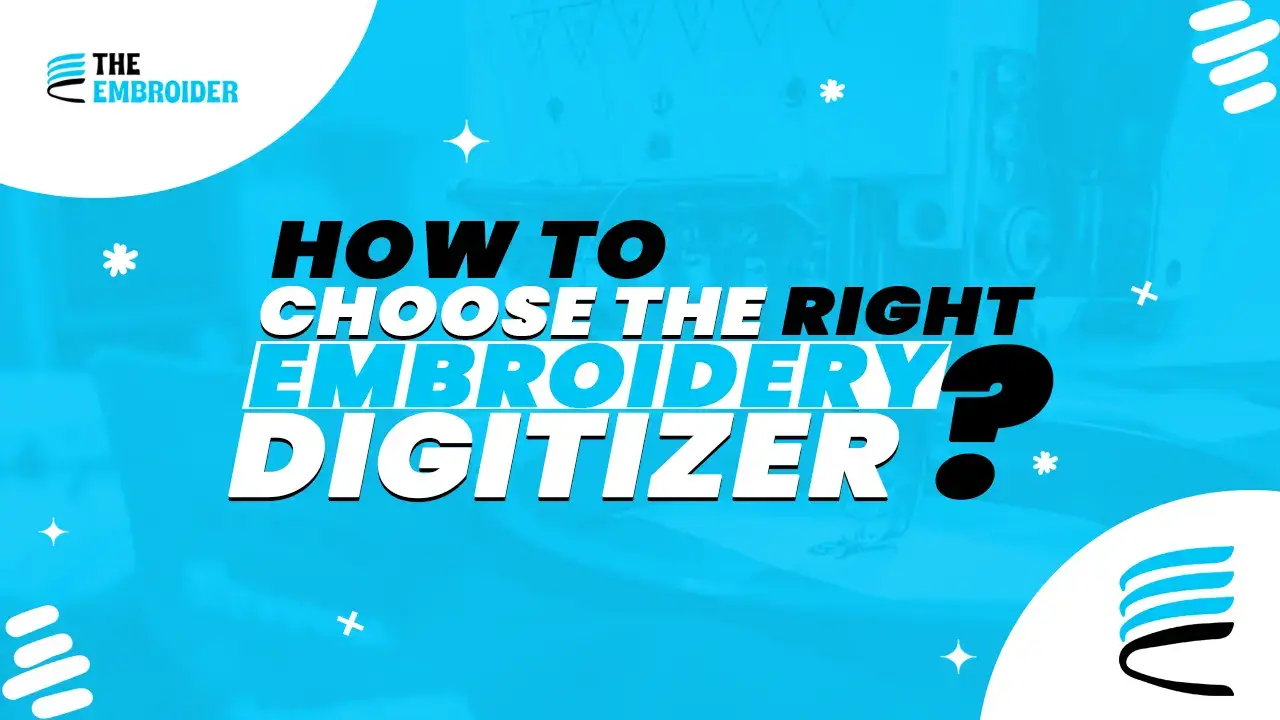Embroidery isn’t just a craft, it’s everywhere. From the hoodie you wear on weekends to the sleek tote bag on TikTok, embroidery has become a mainstream fashion and branding trend.
But here’s the secret: the sharp, boutique-quality embroidery you see doesn’t happen by accident. It’s the result of professional embroidery digitizing, the process that transforms your design into a stitch-ready file.
According to Grand View Research, the global embroidery market was worth $2.6 billion in 2023, and demand for digitizing services continues to rise in the custom apparel industry.
So, how do you find the right embroidery digitizer who can bring your vision to life? Let’s break it down.
What’s an Embroidery Digitizer?
An embroidery digitizer is the tech expert behind the stitches. They take your logo, sketch, or custom design and convert it into a machine-readable file (like DST, PES, or JEF).
This process often begins with file conversion, ensuring your design is clean, scalable, and optimized for stitching.
A skilled digitizer doesn’t just create files—they consider:
- Fabric type (cotton, silk, denim, etc.)
- Stitch density and count
- Thread colors and textures
The result? A crisp, professional embroidery design that looks flawless on any garment or patch.
Why the Right Embroidery Digitizer Matters
Not all digitizers are created equal. A poor-quality file can mean:
- Crooked stitches
- Distorted shapes
- Wasted fabric and thread
A professional digitizing service ensures:
- Clean, precise stitch paths
- Compatibility with your embroidery machine
- Durability across different fabrics
A study from Wilcom revealed that 70% of embroidery errors come from poor digitizing—not the machine itself.
Key Traits of a Skilled Embroidery Digitizer
1. Experience with Vectorizing Services
Top digitizers can seamlessly turn raster images into vector-based designs, ensuring no detail is lost in translation.
2. Fabric Knowledge
Different fabrics behave differently under stitches. The best digitizers know how to tweak designs for cotton, silk, canvas, or denim to avoid puckering or distortion.
3. Professional Software
Look for digitizers using advanced tools like Wilcom, Hatch, or Pulse, software trusted by industry leaders.
4. Creative Eye
The right digitizer doesn’t just follow instructions. They suggest improvements to make your logo or patch more durable and visually striking.
How to Choose the Best Embroidery Digitizing Service
- Check Their Portfolio
Do they have experience with embroidered patches, logos, or apparel? A portfolio reveals if their quality matches your expectations. - Evaluate Communication
Good digitizers listen to your ideas and provide helpful feedback. Clear communication means fewer revisions later. - Verify File Compatibility
Ensure they provide formats that work with your embroidery machine (.DST, .PES, .JEF, etc.). - Compare Pricing But Don’t Compromise Quality
Cheap digitizing often means sloppy results. Reliable providers, like Embroidery Digitizing Services, balance affordability with professional quality.
Benefits of Hiring the Right Embroidery Digitizer
- Precision & Clarity: Your design will stitch exactly as envisioned.
- Consistency: Perfect results whether you’re making one hoodie or 500 uniforms.
- Time-Saving: Avoid wasted stitches, fabrics, and hours of trial-and-error.
- Customization: Tailored solutions, including logo digitizing and patch design.
Common Challenges in Digitizing (and How Pros Solve Them)
- Complex Logos: Overlapping details can be simplified without losing style.
- Fabric Stretching: Adjustments in stitch density prevent puckering.
- Older Machines: Pros ensure backward-compatible file formats.
Why Choose The Embroider
At The Embroider, we specialize in making your designs machine-ready and flawless. From custom embroidered patches to vector art conversion, our team ensures your brand or personal style pops on any fabric.
Wrap Up
Choosing the right embroidery digitizer can make or break your design. With the right partner, you’ll get sharp, consistent, and professional results every single time.
Ready to see your design stitched to perfection? Explore our Digitizing Services today.
FAQs
1. What’s the best file type for embroidery?
Vector files like AI or EPS—they resize cleanly and digitize flawlessly.
2. Is embroidery digitizing profitable?
Yes—low overhead and high demand make it a strong business niche.
3. Can I digitize embroidery myself?
Yes, with practice and software like Wilcom or Hatch, but it requires skill to master.
4. How long does digitizing take?
Simple logos may take under an hour, while complex designs require more refinement.
5. What industries need embroidery digitizing most?
Fashion brands, sports teams, corporate uniforms, and custom patch makers.



